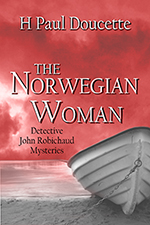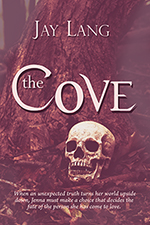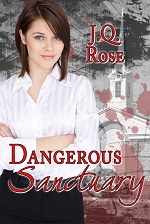Visit Roseanne Dowell's BWL Author page for details and purchase informationCreating Characters from our resources.
Do authors need to lead adventurous, exciting lives like lawyers or doctors to become successful writers?
The answer is a simple, resounding NO!
Can lowly little Charlene Smith, ordinary homemaker, write a best seller? You bet she can! Look at J.D.Rowlings. She actually wrote her novel at a small coffee shop and without a computer. Imagine that writing a book written in longhand?
However, writers do need good imaginations and good ideas. So where do they come up with ideas for their stories?
For starters, write about things you know about and enjoy. Skateboarding, bike riding, hiking, bowling- even working on cars are potential articles or stories. What if a hiker found a dead body? Was it buried in leaves off the beaten path? Why was it there? What happened to it? Was it shot, stabbed, strangled, or did it die of natural causes? You have the potential for a mystery. Or maybe someone brings a car into a mechanic or body shop. Is there blood on the bumper? Hair strands? Or maybe a beautiful woman brings the car in. The mechanic’s attracted to her. Might be the potential for a romance.
One of the first things to do is create my character, usually my main character. I want to know everything possible about them. Not just their appearance and age, I want to know their innermost feelings, their faults, and weaknesses. Because without these characteristics, your characters will come across as fake, unbelievable people. I always jot down these important traits. I use index cards, although I do have sheets with all the important information listed. But for me, index cards work better. They’re smaller and can be stored on my desk in a recipe box right next to my computer. How you do it isn’t important, that you do it is.
Then I add their occupations. Where were they born? What’s their favorite color? Where do they live (town, big city, etc)? Do they live in a house or apartment? Were they born there? Do they live alone? Do they have hobbies? I have a whole list I go through. These are just some of the questions I ask. I want to know my character like I know myself. Once I know that I can really delve into their personalities. What’s their favorite color, likes, dislikes. What makes them happy, sad, angry. But don’t stop there it’s only the beginning. I want to get into their heads. How would they react to this scenario or that? Is all of this really important? Absolutely, we may not use all of these characteristics in the story, especially a short story, but we know them – that’s the important thing. And they are critical for a novel. Get used to doing this. Sometimes these thoughts come to me while I’m cooking or doing the dishes. If I don’t think I’ll remember, I’ll jot them down on a scrap of paper. And lately, I'm doing that more and more. I often wake up in the middle of the night with a scene or conversation (dialogue) going through my head. I've learned a long time ago, get up and write it down. I'll never remember it the next day. I've lost many good scenes by not getting up.
Any character we create may have one of our hobbies or occupations – and how much more believable this character will be because we have first-hand knowledge. But that’s not the only way to come up with ideas. Now that’s not to say you have to limit yourself to these hobbies or occupations. You can always research other occupations and interview people. Maybe your main character is a sheriff or cop. Call your local police department or sheriff’s office. They are more than willing to speak with you about their profession. But do have a list of questions beforehand. Don’t flail about thinking about what to ask. Be prepared. You’re taking their valuable time and they’re more than willing to answer intelligent questions. At the end of the interview ask if they have anything to add or an interesting story they’d like to share with you, more potential ideas. Libraries are another great resource for learning about occupations, as, of course, is the computer. I even asked one if I could use his name. He said he'd rather I didn't but gave me an alternative name to use. I remembered to thank him in the acknowledgments.
Create interesting characters' names. Sometimes the character will almost name themselves I’ve often started off with a name and as the story continued the name just didn’t fit. Silly as it may sound, the character themselves insisted I change it. Another good reason to get into the character's head before you begin.
Characters are all around us. Everyone knows portly Uncle Jess or ample-bosomed Aunt Sophie who can’t seem to resist pinching her nieces and nephews cheeks or slobbering them with kisses. And we all know at least one person who loves to tease and play jokes. Use these characteristics in your stories. (But, please, please remember to change their names)
We all met a person that no matter how good the news will find something negative about it.
Watch people in restaurants, malls, airports. Potential characters are everywhere. Next time: Learning to Lie.
Visit Roseanne's BWL Author page for book details and purchase information
 Pastor Christine Hobbs
has been in the pulpit business for over five years. She never imagined
herself caring for a flock that includes a pig, a kangaroo, and a
murderer.
Pastor Christine Hobbs
has been in the pulpit business for over five years. She never imagined
herself caring for a flock that includes a pig, a kangaroo, and a
murderer. 




















